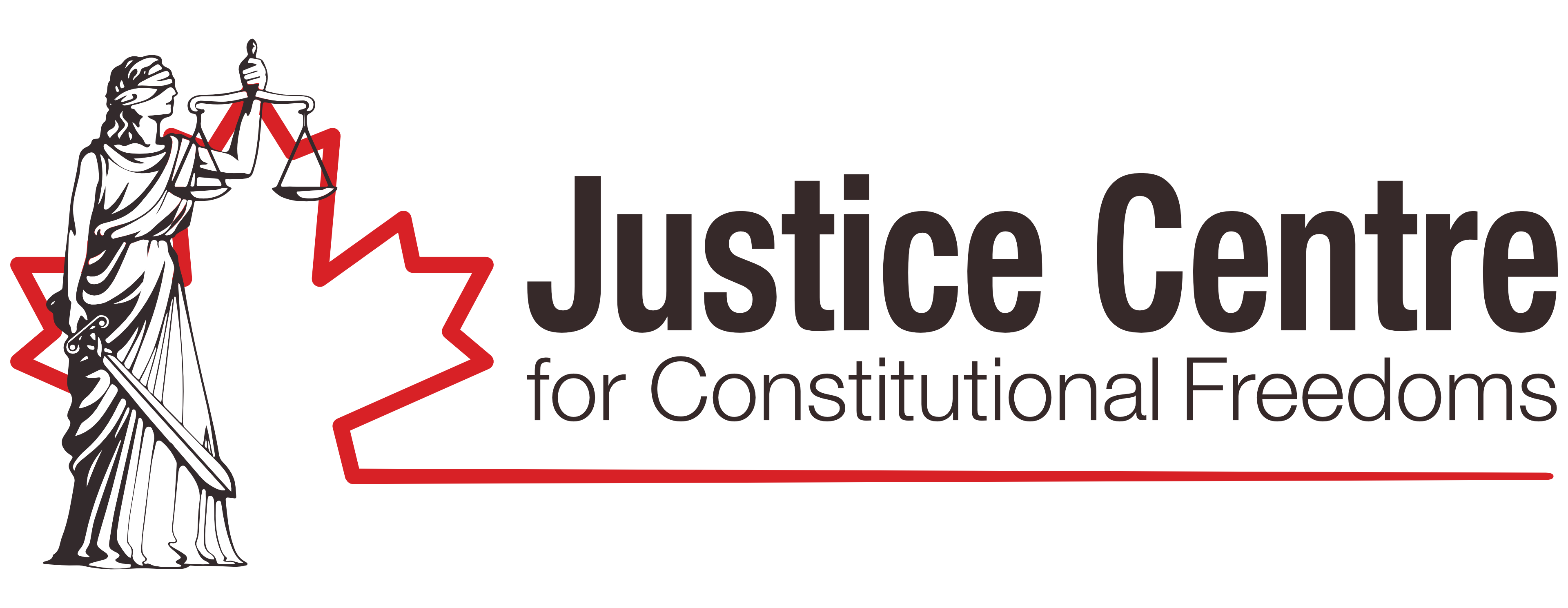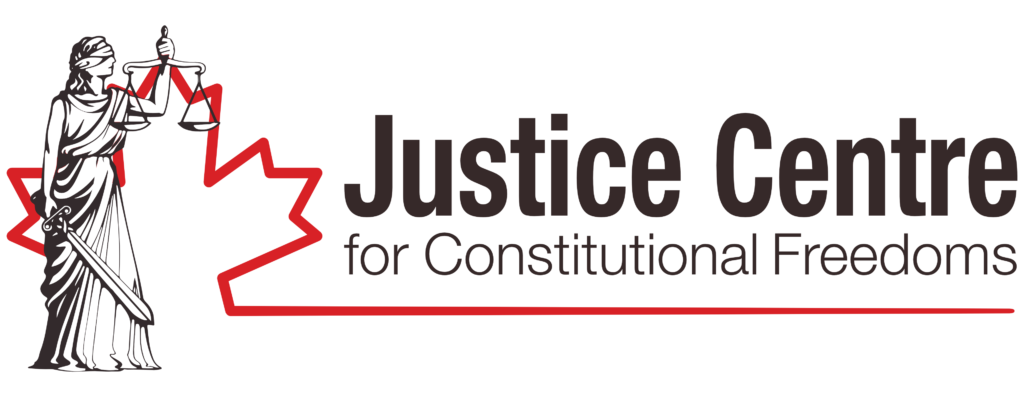Essay Contest 2020
1st Place Winner
by Anonymous
Many of the lockdown measures mandated by Canadian Federal and Provincial governments in response to COVID-19 have undoubtedly infringed upon the rights and liberties of Canadians. The key question is, are these infringements justified? In particular, shutting the international borders and forcing non-essential businesses to close have had substantial economic and social impacts on the personal lives and livelihoods of Canadians. It is my contention that the former measure, closing the borders, was initially justified on the part of the Federal Government while the latter, shutting down non-essential businesses, was not. Of course, this is not to say that justified measures do not involve harms and unjustified measures do not involve benefits. To insist otherwise would be to fall prey to myopic thinking, which many politicians and health officials have a penchant for as of late.
In March 2020, the Canadian Federal Government shut its borders to what it deemed non-essential foreign travelers. Under the Quarantine Act, the Federal Government closed the Canada-US border, making certain exceptions only for necessary travel such as maintaining food supply chains. Additionally, all foreign nationals were banned, and currently are still banned, from visiting Canada except in cases that are deemed necessary, such as an immediate family member of a Canadian citizen or permanent residents. The main argument for these measures was that no reasonable alternative for preventing the spread of COVID-19 was available to the government.(1) I believe this argument is essentially correct. Though the Trudeau government has been criticized for implementing these measures too late in the pandemic, shutting the borders was, at least initially, one of the most effective and reasonable responses to the pandemic.
One of the primary and most obvious duties of government is the protection of its citizens. Thomas Hobbes, in the opening lines of his magisterial work The Leviathan, writes, “For by art is created that great Leviathan called a Commonwealth, or State (in Latin, Civitas), which is but an artificial man, though of greater stature and strength than the natural, for whose protection and defence it was intended”.(2) For Hobbes, the formation of the state, i.e. government, was necessary to liberate man from an otherwise chaotic and anarchic state that man naturally finds himself in. John Locke, though disagreeing with Hobbes on the original state of nature man finds himself in prior to formation of the state, similarly argued that citizens voluntarily enter into a societal contract for the purpose of the preservation of their natural rights. This notion, what we may call the right to protection, has its origins in the common law tradition and natural rights theory, which then finds its expression in English constitutionalism as well as much of American constitutional thought.(3)
If we accept this longstanding tradition in political thought -that government has a duty to protect its citizens- then, arguably, the potential threat COVID-19 posed to Canadians early in the year was severe enough to merit the intervention of the government to protect Canadians from that threat. During the early stages of the pandemic, little was known about the virus and initial estimates placed the infection fatality rate (IFR) anywhere from 2-5%, significantly higher than seasonal flu viruses.(4) Given the novel nature of the virus, lack of credible information about it, and attempts to mislead or otherwise cover up developments of the virus by China, coupled with dire predictions promulgated by leading health officials, it was reasonable to conclude that the virus posed a severe enough threat to the safety and well-being of Canadians to justify the government’s intervention in some capacity.
If I am correct that the threat COVID-19 posed to Canadians merited the response of the Canadian Government, then one of the primary methods available to the government to protect its citizens was border closure. We know that the virus’ origin was not from Canada, but from Wuhan, China. Canada’s first cases of COVID-19 were linked to travel from China.(5) Therefore, Canada’s borders represented the first, and perhaps strongest, line of defence against the spread of the virus within Canada itself. Closing Canada’s borders to all non-essential travel thus had the potential to prevent, or at least significantly mitigate, community transmission of the virus within Canada, thereby allowing the possibility of avoiding harsher and more invasive government measures that were later imposed. Unfortunately, this is not how things turned out. Wesley Wark, a leading Canadian intelligence expert, argued that Canada’s failure to close the borders to outside travel early on resulted in January and February of 2020 being “lost months for Canada in terms of us preparing for the impacts of COVID-19”.(6)
Additionally, the US quickly developed into one of the epicenters of the virus. Given Canada’s geographical proximity to, and strong economic ties with, the US, closing the US Canada border, at least initially, was a necessary and justified precaution. I should emphasize that this argument by no means is intended to either support or undermine the continued closure of Canada’s border. Rather, it is my contention here that by initially closing the border, the Canadian Government was fulfilling one of its primary duties, namely, the protection of its citizens. Whether the government acted too late in doing so and whether the duration of the border closure is merited are separate issues. Closing the Canadian borders was a justified measure implemented by the Canadian Government.
Conversely, making the arbitrary distinction between essential and non-essential businesses and forcing the latter to close was not a justified response on the part of Canadian governments. Indeed, it is difficult to overstate the devastating social and economic harms the distinction between essential and non-essential workers has had in our country over the last year. As politicians have quickly learned, there is no sharp dividing line between the economy and the health and well-being of the members of that economy. As of April 2020, 94% of Canadians reported staying home more due to Covid-19.(7) As a result, we have witnessed record levels of unemployment throughout Canada, precipitating the largest stimulus spending package Canada has ever seen, roughly $27 billion paid directly to Canadians.(8)
In Alberta specifically, unemployment more than doubled, jumping from 7.2% in February of this year to 15.5% by May 2020.(9) Additionally, the toll on mental health has been staggering. In May of this year, 1 in 20 Canadians (6%) reported experiencing thoughts or feelings of suicide as a result of the pandemic, as opposed to 2.5% of Canadians last year.(10)
18% of Canadians self-reported that their alcohol consumption increased during the lockdown.(11) Given these statistics are based on self-reporting, I suspect the percentages of alcohol consumption and suicide/depression are far higher in reality. Even divorce rates spiked during the lockdowns.(12) Thousands of businesses in both Canada and the US have been forced to permanently close, including countless ‘mom and pop’ stores and shops.(13) And Canada’s federal deficit is estimated to hit $343 billion this year- a staggering figure.
The standard response to these harms is that the strict measures put in place were a necessary evil. Though they severely infringed on the rights and liberties of Canadians, the measures saved countless lives and therefore were justified. But so far, governments have been unwilling to support this claim by conducting in-depth investigations into the benefits and harms caused by lockdown measures, such as forcing non-essential businesses to close. Additionally, entertaining such counterfactuals as, ‘had we not shut down non-essential businesses and imposed strict stay at home orders, there would have been more deaths’, are hopelessly speculative. The best we can do is make comparisons with other nations who imposed more lenient measures. And that is exactly what the Alberta government has done. Recently, the Alberta government posted data to their website comparing the number of deaths in Alberta with deaths in Sweden, a country who imposed minimal stay-at-home orders.(14) Though the information was posted without any context, the comparison is intended to strongly suggest that Alberta’s strict lockdown measures were successful in curbing the number of deaths in the province, since Sweden experienced twice as many cases and twelve times as many deaths per 10,000 people as Alberta.
However, this particular comparison is misleading at best. First, the comparison time is uninformative since the data spans the time period from March 1 to May 18, just a mere two and a half months. A truly accurate comparison would require long-term data, which I suspect will emerge with time. And even if in the long run Alberta’s deaths are far fewer than Sweden’s this does not necessarily mean our strict lockdown measures are the cause of that disparity. There are many other factors that determine death rates in a country other than lockdown measures, such as age, sex, overall health of a population, race, among others. For example, the Centre for Disease Control and Prevention (CDC) in the US recently announced that only 6% of COVID deaths occurred with no comorbidities.(15) That means 94% of COVID deaths in the US occurred to individuals who already had two or more existing health issues, which entails that the overall general health of a population is highly relevant when considering mortality rates of the virus. Second, demographically and geographically, Sweden and Alberta have some similarities but also some important differences. One similarity between Alberta and Sweden is that both are highly urbanized. At the end of 2018, roughly 87% of Sweden’s population resided in urban areas.(16) Similarly, in 2016, 83.6% of Alberta’s population resided in urban settings.(17) Given that Alberta is on an upward urbanizing trend, the number is likely higher now in 2020. However, Sweden has more than double the population of Alberta, around 10 million, within a slightly smaller geographical area than Alberta. Additionally, and more importantly, 20% of Sweden’s population are over the age of 65.(18) Given the population of Sweden, that puts the number of people over the age of 65 around two million. By contrast, as of March 2020 only 640,000 Albertans were over the age of 65.(19) This is a significant disparity between Albertan and Swedish populations. And given that people over the age of 65 are at a significantly higher risk of death from COVID-19,(20) it is not surprising that Sweden has experienced significantly more deaths than Alberta. This large disparity in the number of people over the age of 65 between Alberta and Sweden ought to make politicians and health officials hesitant of making such rash comparisons in an effort to offer ad hoc justifications of draconian measures.
In addition to the harms caused by the forced closure of non-essential businesses, there is a serious worry that these sorts of limitations and violations of the rights and freedoms of Canadians will be more or less permanent. The Alberta government has refrained from establishing or even proposing a plan to return to life as it was before the pandemic. For example, the third and final stage of Alberta’s relaunch strategy still places significant restrictions on businesses and physical distancing rules. Ditto for places like California.(21) The Alberta government has also refrained from even developing and publishing criteria that must be met in order for the province to return to a state of pre-COVID normalcy, even though certain original criteria that spurned on the lockdown measures to begin with- such as overburdened health systems- have long been met. One gets the sense that the goal posts have been moved and will continue to be moved.
It is truly remarkable that so few take issue with the government’s extensive intrusion into the economy. Many people seem to take the remarkable level of influence the state exerts on its citizens for granted, as if it’s just the most natural reaction in the world to the threat of a virus (it certainly has not been in the past). The willingness of, and ease with which, politicians insert themselves into the personal lives of Canadians is unprecedented, from forbidding singing in church(22) to suggesting that people wear a mask during sex.(23) And all this in the name of science. One hears the phrase, “we are simply following the science” continually from our political leaders. But to less credulous and naive ears, the confident declaration that these unprecedented programmes in public policy are simply being read off the science rings hollow.
Paul Feyerabend warned of the intolerant and hegemonic nature votaries of a scientistic-rationalist worldview could embody in liberal post-enlightenment societies. In a society where the dogmatism of science has replaced the dogmatism of the church and its theology, scientific practitioners now act as a priestly caste, delivering to the rest of society the revelation of science that is beyond all question or dispute.(24) The result can often be the suppression of views or ideas that conflict with the given scientific opinion at the time. Examples abound. Just consider censorship on the part of Big Tech companies. Social media giants Facebook, Google, and YouTube have repeatedly censored posts by doctors discussing the use of anti-malaria drug hydroxychloroquine as a possible cure for COVID-19.(25)
Perhaps even more shockingly, when British scientists part of the RECOVERY trial studying the efficacy of hydroxychloroquine in treating COVID-19 released results in June that the drug was ineffective in patients who were severely ill in ICU, ethics boards and funding agencies around the world terminated studies on the drug.(26) The kicker is that scientists are now discovering that medicines which don’t work in latter more severe stages of the disease may very well work in earlier stages or even as a preventative. (27) An anti-viral drug like hydroxychloroquine may, in fact, be helpful,(28) though finding out depends on scientists having the freedom to explore this alternative possibility. Never before has such a misinterpretation of scientific data taken place on such a public level.
Further research very well may vindicate the use of harsh lockdown measures, such as shutting down non essential businesses, to mitigate deaths from the virus. But that in itself does not justify the practice. Allowing state intervention to occur to the degree that it has already is, arguably, far more dangerous than the fallout of COVID-19.
The opinions expressed by the essay winners are solely those of the authors and do not necessarily those of the Justice Centre for Constitutional Freedoms.
1 https://orders-in-council.canada.ca/attachment.php?attach=39518&lang=en
2 https://socialsciences.mcmaster.ca/econ/ugcm/3ll3/hobbes/Leviathan.pdf. Introduction.
3 Steven J. Heyman, The First Duty of Government: Protection, Liberty, and the 14th Amendment, p. 513. https://scholarship.law.duke.edu/cgi/viewcontent.cgi?article=3172&context=dlj
4 https://www.livescience.com/coronavirus-death-rate-lower-thought-wuhan.html
5 https://www.cbc.ca/news/politics/covid-coronavirus-pandemic-trudeau-borders-1.56197056 Ibid.
6 Ibid.
7 https://www.ccsa.ca/sites/default/files/2020-04/CCSA-NANOS-Alcohol-Consumption-During-COVID-19-Report-2020-en.pdf
8 https://www.canada.ca/en/department-finance/news/2020/03/canadas-covid-19-economic-response-plan-support-for-canadians-and-businesses.html
9 https://economicdashboard.alberta.ca/Unemployment#interprovincial
10 https://cmha.ca/news/warning-signs-more-canadians-thinking-about-suicide-during-pandemic
11 https://www.ccsa.ca/sites/default/files/2020-04/CCSA-NANOS-Alcohol-Consumption-During-COVID-19-Report-2020-en.pdf
12 https://torontosun.com/news/national/canadian-divorce-rates-expected-to-pass-38-average-post-covid-19
13 https://www.ctvnews.ca/business/as-2020-retail-closures-accumulate-thousands-more-expected-1.4983695
14 https://www.alberta.ca/assets/documents/covid19-cases-alberta-vs-sweden.pdf
15 https://www.cdc.gov/nchs/nvss/vsrr/covid_weekly/index.htm?fbclid=IwAR3-
wrg3tTKK5-9tOHPGAHWFVO3DfslkJ0KsDEPQpWmPbKtp6EsoVV2Qs1Q#ExcessDeaths
16 https://data.worldbank.org/indicator/SP.URB.TOTL.IN.ZS?locations=SE
17 https://open.alberta.ca/dataset/7d02c106-a55a-4f88-8253-4b4c81168e9f/resource/e435dd59-2dbd-4bf2-b5b6-3173d9bd6c39/download/2016-census-population-and-dwelling-counts.pdf
18 https://sweden.se/society/elderly-care-in-sweden/
19 https://www.alberta.ca/seniors-resources.aspx
20 https://www.cdc.gov/coronavirus/2019-ncov/need-extra-precautions/older-adults.html!6
21 https://covid19.ca.gov/safer-economy/
22 https://open.alberta.ca/dataset/2be831dd-d83e-42da-b634-6bc6d5232d1a/resource/dc6e8a2e-978b-4121-acc7-8889fcfc160e/download/covid-19-relaunch-guidance-places-of-worship-2020-05.pdf
23 https://www.reuters.com/article/us-health-coronavirus-canada-sex-idUSKBN25T2Y9?taid=5f4ff7c846b85b0001f9bccf&utm_campaign=trueAnthem:+Trending+Content&utm_medium=trueAnthem&utm_source=twitter
24 ‘How to Defend Society Against Science’, https://www.radicalphilosophyarchive.com/article/how-to-defendsociety-
against-science
25 https://www.poynter.org/fact-checking/2020/doctors-cries-of-censorship-become-part-of-their-message/
26 https://nationalpost.com/news/authorities-misinterpreting-covid-19-trial-data-with-disastrous-results-canadianresearchers-say/wcm/4e3e12cd-d1a7-4889-9797-dd8252bfd407/
27 Ibid.
28 https://www.mlive.com/news/2020/07/hydroxychloroquine-is-effective-in-treating-covid-19-says-henry-fordhealth-
system-study.html


